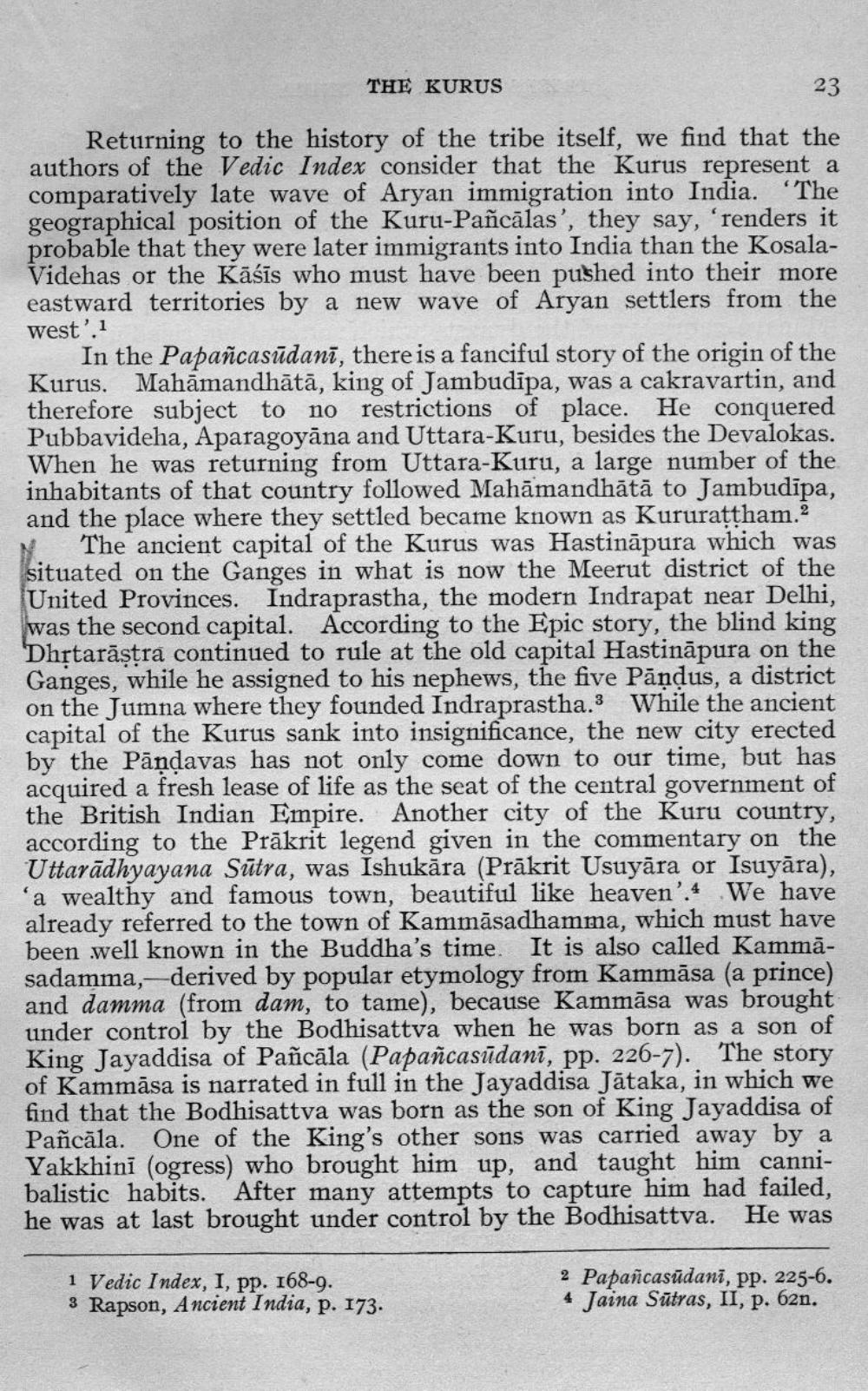________________
THE KURUS
23
Returning to the history of the tribe itself, we find that the authors of the Vedic Index consider that the Kurus represent a comparatively late wave of Aryan immigration into India. "The geographical position of the Kuru-Pañcālas', they say, 'renders it probable that they were later immigrants into India than the KosalaVidehas or the Kāšīs who must have been pushed into their more eastward territories by a new wave of Aryan settlers from the west'. 1
In the Papañcasūdanī, there is a fanciful story of the origin of the Kurus. Mahāmandhātā, king of Jambudīpa, was a cakravartin, and therefore ubject to no restrictions of place. He conquered Pubbavideha, Aparagoyāna and Uttara-Kuru, besides the Devalokas. When he was returning from Uttara-Kuru, a large number of the inhabitants of that country followed Mahāmandhātā to Jambudīpa, and the place where they settled became known as Kururattham.
The ancient capital of the Kurus was Hastināpura which was situated on the Ganges in what is now the Meerut district of the United Provinces. Indraprastha, the modern Indrapat near Delhi, was the second capital. According to the Epic story, the blind king Dhrtarāştra continued to rule at the old capital Hastināpura on the Ganges, while he assigned to his nephews, the five Pāņdus, a district on the Jumna where they founded Indraprastha. While the ancient capital of the Kurus sank into insignificance, the new city erected by the Pāņdavas has not only come down to our time, but has acquired a fresh lease of life as the seat of the central government of the British Indian Empire. Another city of the Kuru country, according to the Prākrit legend given in the commentary on the Uttarādhyayana Sūtra, was Ishukāra (Prākrit Usuyāra or Isuyāra), 'a wealthy and famous town, beautiful like heaven'.4 We have already referred to the town of Kammāsadhamma, which must have been well known in the Buddha's time. It is also called Kammāsadamma,-derived by popular etymology from Kammāsa (a prince) and damma (from dam, to tame), because Kammāsa was brought under control by the Bodhisattva when he was born as a son of King Jayaddisa of Pañcāla (Papañcasūdanī, pp. 226-7). The story of Kammāsa is narrated in full in the Jayaddisa Jātaka, in which we find that the Bodhisattva was born as the son of King Jayaddisa of Pañcāla. One of the King's other sons was carried away by a Yakkhini (ogress) who brought him up, and taught him cannibalistic habits. After many attempts to capture him had failed, he was at last brought under control by the Bodhisattva. He was
1 Vedic Index, I, pp. 168-9. 3 Rapson, Ancient India, p. 173.
2 Papañcasūdani, pp. 225-6. 4 Jaina Sūtras, II, p. 62n.




